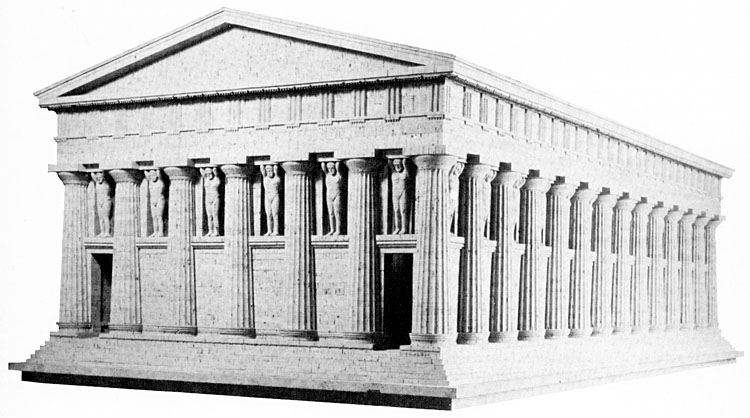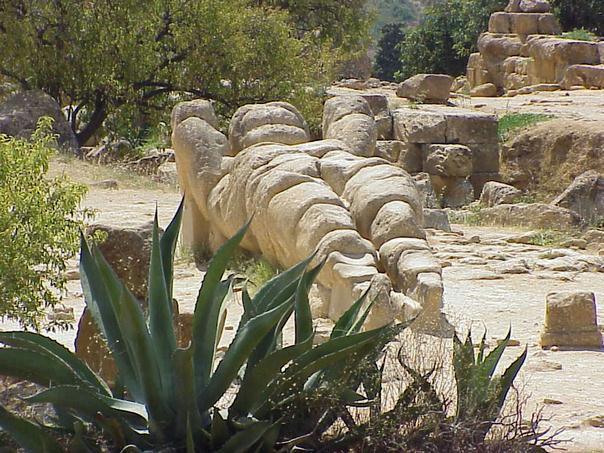Agrigento (ancient Akragas) occupied the top of a ridge between two rivers about five kilometres inland from the coast in South-west Sicily. The ridge slopes away abruptly in three directions but is more gentle to the South side which leads down to the valley. Arranged along the southern edge of the ridge plateau are the major sanctuaries and temples of the city, including the temples of Hera, Concord, Herakles, Olympian Zeus, and Hephaistos.

A view along the scarp and southern wall of Agrigento
Two columns of the porch of the "Temple of Juno" are in the foreground.
The well-preserved "Temple of Concord" is seen in the distance (both 5th century Doric)
THE TEMPLE OF OLYMPIAN ZEUS
The Temple of Olympian Zeus was built after 480 BCE as a memorial of the defeat of the Carthaginians that year. The outer colonnade was closed by screen walls. Between the columns (which were over 12 feet thick at their bases) stood giant Telamons (a weight-bearing the male counterpart of the
Caryatid) or Atlantes (sing. Atlas) figures that appeared to support the architrave. These figures were over 25 feet high.
Greek temples in the west were usually built of local limestone rather than costly marble. The limestone was then stuccoed over to provide a smooth, marble-like surface, and to disguise the courses (joins) of the building blocks.
This huge temple (the whole building was over 120 feet longer than the Parthenon) was still incomplete in 406 BCE, when it was sacked by the Carthaginians.

Reconstructed Cork Model of the Temple of Olympian Zeus, Agrigento

Reconstructed elevation of the Temple of Olympian Zeus, Agrigento, c. 410


Two views of a giant Telamon figure on the foundations of the Temple of Olympian Zeus at Agrigento

 SPRING 2016
SPRING 2016  SCHEDULE
SCHEDULE  REQUIREMENTS
REQUIREMENTS

 SPRING 2016
SPRING 2016  SCHEDULE
SCHEDULE  REQUIREMENTS
REQUIREMENTS